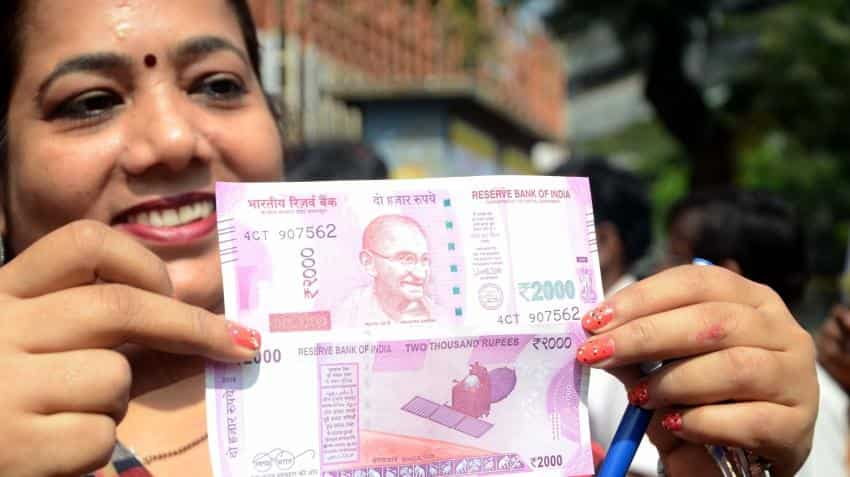RBI's SLR cut may help bring down your EMIs
Any reduction in SLR gives more room to bankers for trimming interest rates. This would mean, if you are borrower your EMIs may come down further.

The Reserve Bank of India (RBI) while maintaining a 'status quo' in its second bi-monthly monetary policy on Wednesday decided to reduce SLR by a 50 basis points.
RBI said, “As per the existing road map, commercial banks have to reach the minimum liquidity coverage ratio (LCR) of 100% on January 1, 2019. “
It added, “In order to give greater flexibility to banks to comply with the LCR requirement in an efficient manner, it has been decided to reduce the SLR from 20.5% of Net Demand and Time Liabilities (NDTL) to 20% of the same.”
Ashwin Sheth, CMD, Sheth Corp on RBI policy commented, "Urjit Patel keeping the repo rate unchanged at 6.25% was an expected move, as RBI was expecting clarity on monsoon and impact of GST rollout."
He further added, "Although SLR was cut by 50 basis points to 20%, it will certainly instill more liquidity into the banking system which will indirectly help banks to lend more money."
What are Statutory Liquidity Ratio (SLR)?
Apart from Cash Reserve Ratio (CRR), banks are needed to hold a certain percentage of NDTL in forms of securities like government bonds, gold, cash, etc.
This certain portion is called as SLR – which is done to ensure banks have enough of funds available to pay back to its customers who may have any immediate requirement to encash their deposits.
In case of lower SLR, banks have higher ability to give credit which means further room for a cut in marginal cost fund based of lending rates (MCLR) making people to opt for more loans for various purpose.
Bank credit growth has been at a single-digit growth in last fiscal due to banks rising non-performing assets and lack of investment.
RBI stated, surplus liquidity in banking system post-demonetisation was drained by Rs 1.5 lakh crore between April – May 2017, but massive spending by the government re-injected liquidity into the system, raising the daily average overall surplus liquidity in banking system to Rs 4.2 lakh crore in April and Rs 3.5 lakh crore in May 2017.
As per analysts there is still more room for MCLR cut. ICRA in its report stated that declining interest rate will prompt existing bank borrowers to shift from base rate system to new MCLR mechanism as will help reduce repayment cost.
Jefferies said in its recent report that, “A 60-90 basis points reduction in one-year bank funding rate could shift the marginal volume from a non-bank to a bank.”
Shifting from base rate to new MCLR rate means your EMIs will come down.
During January – March 2017 period, the base rate of banks came down from a range of 9.3 – 9.7% to 9.1% - 9.6% while the MCLR reduced from 8.95% to 7.75 – 8.20%.
RBI kept policy repo rate unchanged at 6.25% in July policy.
Get Latest Business News, Stock Market Updates and Videos; Check your tax outgo through Income Tax Calculator and save money through our Personal Finance coverage. Check Business Breaking News Live on Zee Business Twitter and Facebook. Subscribe on YouTube.
RECOMMENDED STORIES

Senior Citizen Latest FD Rates: Know what major banks like SBI, PNB, Canara Bank, HDFC Bank, ICICI Bank are providing on fixed deposits

Gratuity Calculator: Rs 38,000 as last-drawn basic salary, 5 years and 5 months of service; what will be gratuity amount?

EPFO Pension Schemes: Early pension, retirement pension, nominee pension and 4 other pension schemes that every private sector employee should know

Top 5 Small Cap Mutual Funds with best SIP returns in 1 year: See how Rs 25,000 monthly investment has grown in each scheme

Top 7 SBI Mutual Funds With Best SIP Returns in 1 Year: Rs 25,000 monthly SIP investment in No.1 fund has jumped to Rs 3,58,404
06:29 PM IST











 RBI cancels licence of Vijayawada-based Durga Co-op Urban Bank
RBI cancels licence of Vijayawada-based Durga Co-op Urban Bank  Reserve Bank amends master direction on KYC
Reserve Bank amends master direction on KYC  Nearly 98% of Rs 2000 banknotes returned; Rs 6,970 crore worth notes still with public
Nearly 98% of Rs 2000 banknotes returned; Rs 6,970 crore worth notes still with public Rupee settles on flat note, rises 1 paisa to 84.07 against US dollar
Rupee settles on flat note, rises 1 paisa to 84.07 against US dollar  Retail inflation likely to average 4.5% in FY25: RBI Deputy Governor
Retail inflation likely to average 4.5% in FY25: RBI Deputy Governor